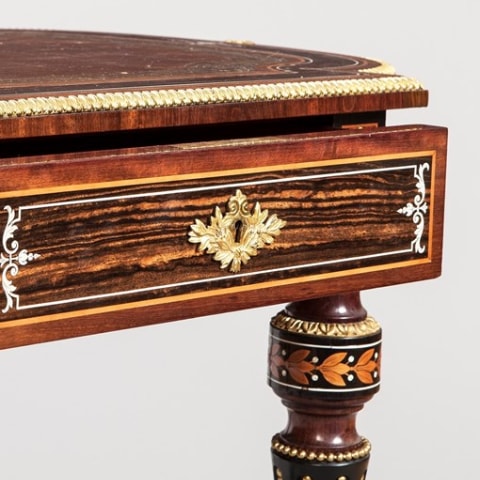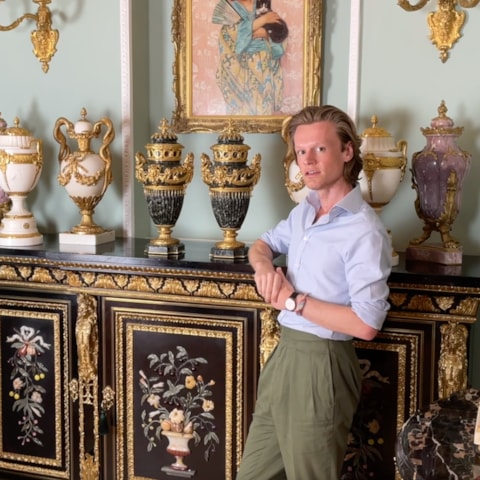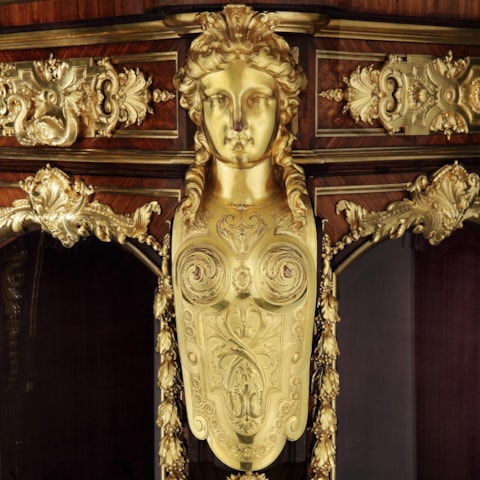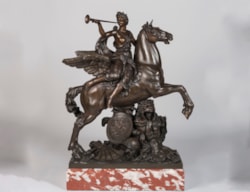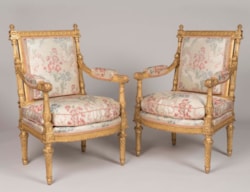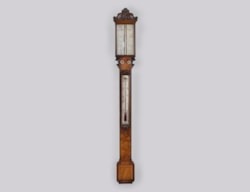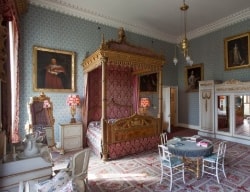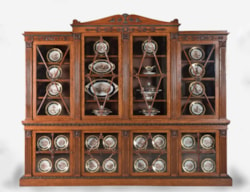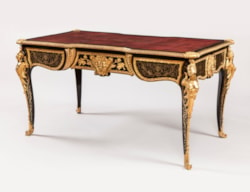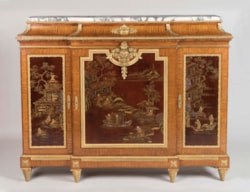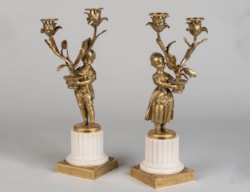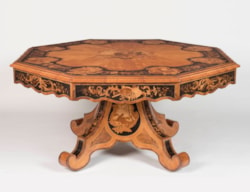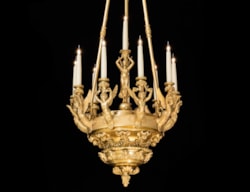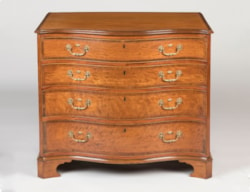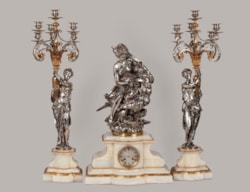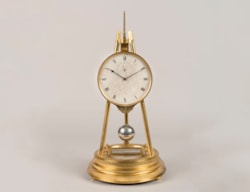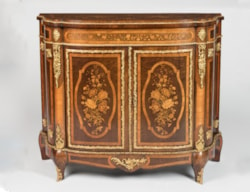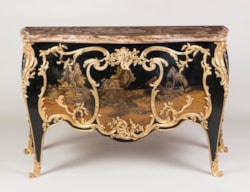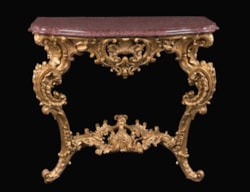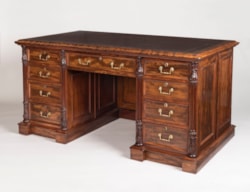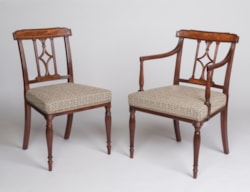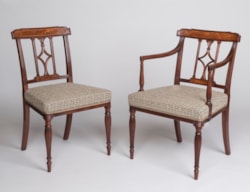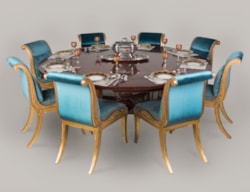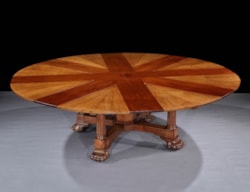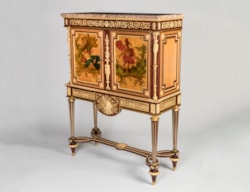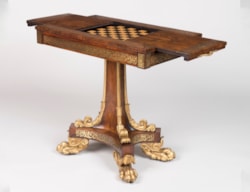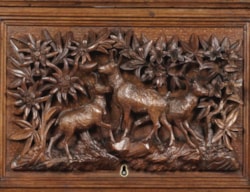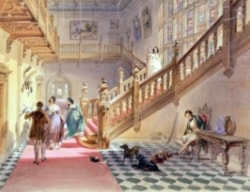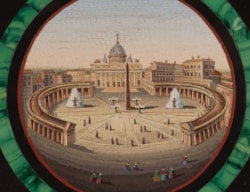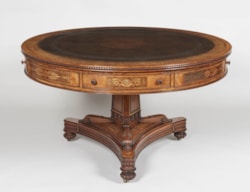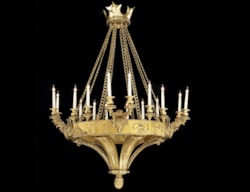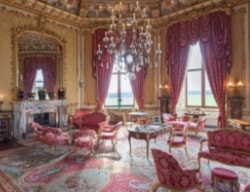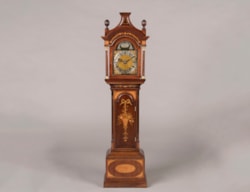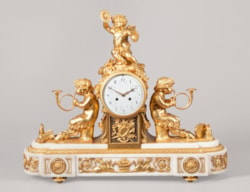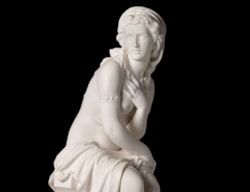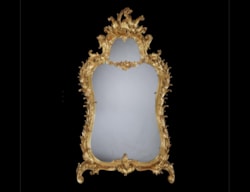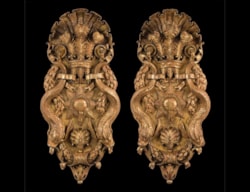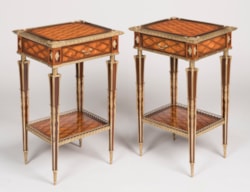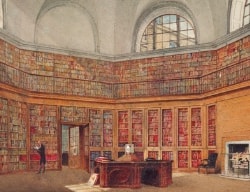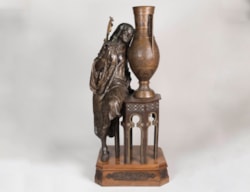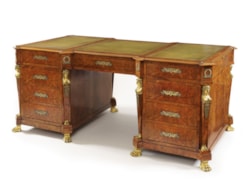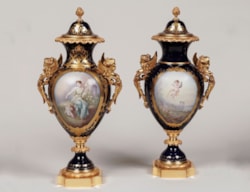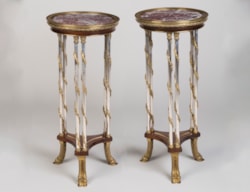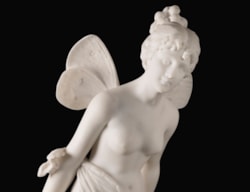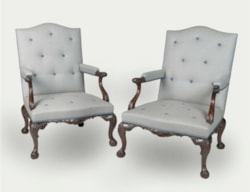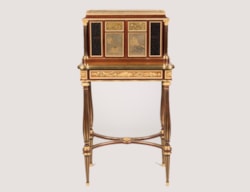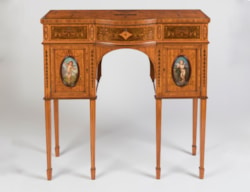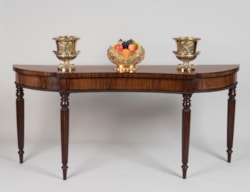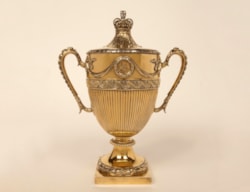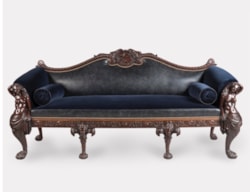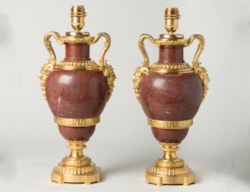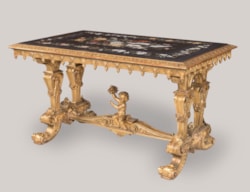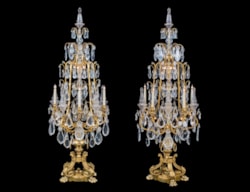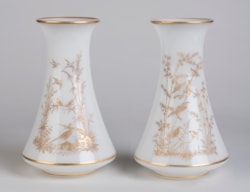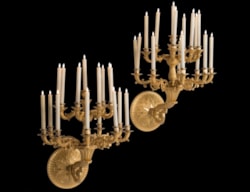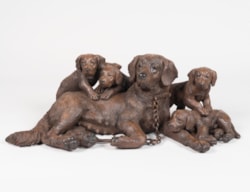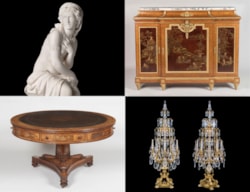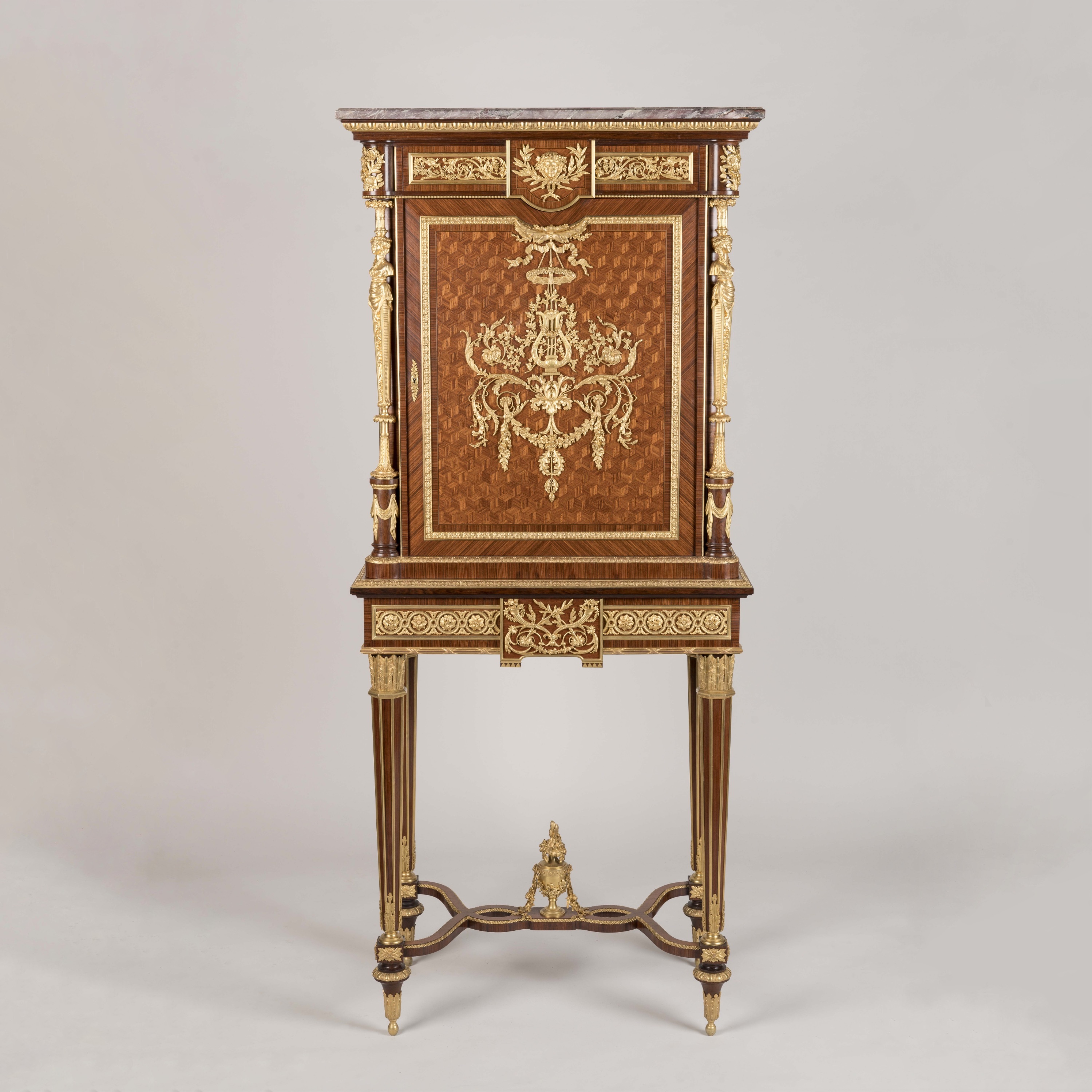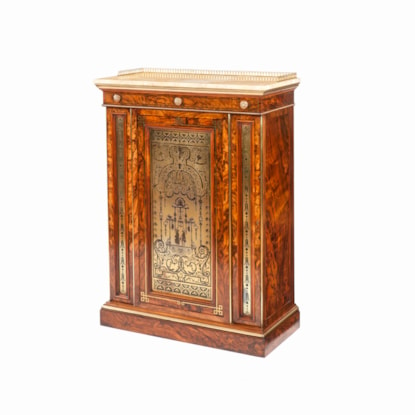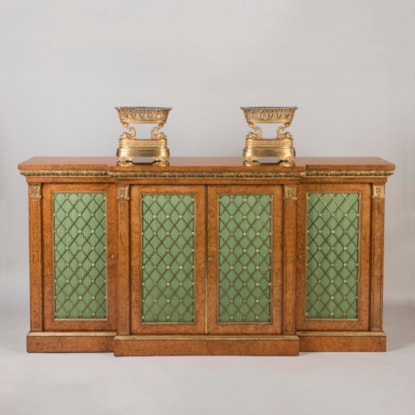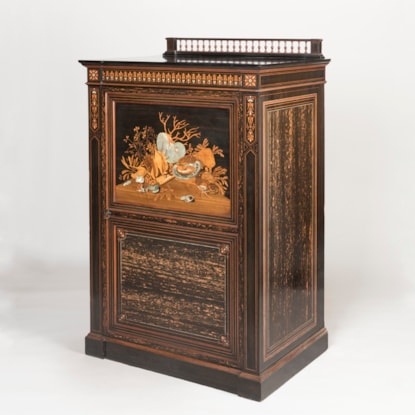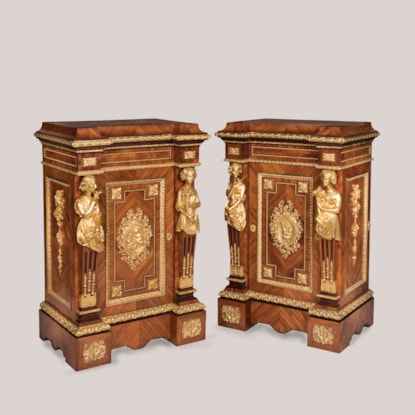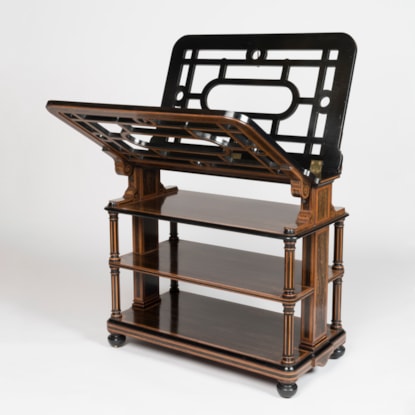An Exceptional Cabinet-on-Stand By François Linke
An Exceptional Cabinet-on-Stand By François Linke
Dimensions: H: 70 in / 177 cm | W: 30 in / 75.5 cm | D: 18 in / 45 cm
An Exceptional Cabinet-on-Stand
In the manner of Adam Weisweiler
By François Linke
Model no. 684

- Designed in the Louis XVI style, this cabinet features bois violette and bois satiné parquetry, a fleur de pêcher marble top, and gilded mounts
- Originally purchased by Madame d’Astoreca of Madrid, it has notable provenance and connections to other significant Linke pieces.
- François Linke, renowned for blending traditional and contemporary styles, gained fame at the 1900 Paris Exposition Universelle
Designed in the Louis XVI style, constructed from bois violette and cubed bois satiné parquetry, surmounted by its original moulded fleur de pêcher marble top, the whole cabinet decorated with hand-chased mercury fire gilded mounts of the finest quality, supported on foliate toupie feet and having tapering legs modelled as quivers and joined by a shaped stretcher in the manner of Weisweiler, the apron set with a small central drawer dressed with intertwining cornucopia and flanked by an ormolu band of guilloches, the inverted corners set with free-standing columns of female caryatids bearing flower baskets flanking the central door set with an elaborate ormolu lyre suspended from a ribbon-tied laurel wreath and surrounded by scrolling foliage and floral garlands, opening to reveal a mahogany-lined and shelved interior, the upper frieze centred by a Bacchic mask flanked by scrolled foliate rinceaux populated with birds and flowers, surmounted by the marble top above the egg-and-dart ormolu surround. The bronze incised "F. Linke" on the stiff-leaf ormolu guard to the right corner.
French, circa 1905
Provenance: Purchased directly from Linke by Madame d'Astoreca of Madrid for her Paris residence; thence by descent
Linke & the d'Astoreca family
Although not much is known about the d'Astoreca family, the Linke archives mentions the family's residence in Neuilly, just outside of Paris, despite the Spanish surname. The d'Astorecas ordered a large amount of furniture from Linke, including a grand piano, as well as commissioning curtains and blinds from the firm.
Linke Model no. 684
Payne states that the current cabinet-on-stand, with the index number 684, was initially offered by Beurdeley. It was later replicated and modified into a companion vitrine by Linke. An example of both the cabinet and the vitrine was sold to Elias Meyer for his residence in London's Grosvenor Square (see Payne, 2003, p. 247, pl. 262 for a period photograph featuring both pieces in their original setting). Following Meyer's death in 1926, Linke repurchased these items and then sold them to the King of Egypt towards the end of the same decade.
François Linke
François Linke (1855-1946) was a renowned French cabinetmaker, who gained significant prominence during the late 19th and early 20th centuries. Born in Pankraz, Bohemia, Linke moved to Paris in 1875, where he established independent workshops. By 1881, he had set up his primary workshop at 170 Rue du Faubourg Saint-Antoine, and later expanded to 26 Place Vendôme, arguably the capital's most fashionable address.
Linke's craftsmanship and artistic innovations in furniture design earned him international acclaim, particularly highlighted at the 1900 Paris Exposition Universelle. He became widely recognized for his ability to create high-quality, individualistic pieces that often blended traditional styles with contemporary influences. Specialising in the style of the ancien regime, Linke modified the proportions of the eighteenth century pieces to suit the smaller Parisian apartments.
Collaborating frequently with the sculptor Léon Messagé, Linke's work often featured a combination of the Louis XV style and the emerging Art Nouveau movement. His success at the 1900 exhibition provided him with financial stability, allowing him to participate in subsequent international fairs and expand his market.
In recognition of his contributions, Linke was appointed Officier de L'Instruction Publique in 1904 and served on the Jury of the Liège exhibition in 1905. Following his exhibitions in St. Louis (U.S.A.) in 1904 and Liège in 1905, Linke was awarded the Croix de la Légion d'Honneur, the highest French decoration, on October 11, 1906.
Provenance: Purchased directly from Linke by Madame d'Astoreca of Madrid for her Paris residence; thence by descent
Linke & the d'Astoreca family
Although not much is known about the d'Astoreca family, the Linke archives mentions the family's residence in Neuilly, just outside of Paris, despite the Spanish surname. The d'Astorecas ordered a large amount of furniture from Linke, including a grand piano, as well as commissioning curtains and blinds from the firm.
Linke Model no. 684
Payne states that the current cabinet-on-stand, with the index number 684, was initially offered by Beurdeley. It was later replicated and modified into a companion vitrine by Linke. An example of both the cabinet and the vitrine was sold to Elias Meyer for his residence in London's Grosvenor Square (see Payne, 2003, p. 247, pl. 262 for a period photograph featuring both pieces in their original setting). Following Meyer's death in 1926, Linke repurchased these items and then sold them to the King of Egypt towards the end of the same decade.
François Linke
François Linke (1855-1946) was a renowned French cabinetmaker, who gained significant prominence during the late 19th and early 20th centuries. Born in Pankraz, Bohemia, Linke moved to Paris in 1875, where he established independent workshops. By 1881, he had set up his primary workshop at 170 Rue du Faubourg Saint-Antoine, and later expanded to 26 Place Vendôme, arguably the capital's most fashionable address.
Linke's craftsmanship and artistic innovations in furniture design earned him international acclaim, particularly highlighted at the 1900 Paris Exposition Universelle. He became widely recognized for his ability to create high-quality, individualistic pieces that often blended traditional styles with contemporary influences. Specialising in the style of the ancien regime, Linke modified the proportions of the eighteenth century pieces to suit the smaller Parisian apartments.
Collaborating frequently with the sculptor Léon Messagé, Linke's work often featured a combination of the Louis XV style and the emerging Art Nouveau movement. His success at the 1900 exhibition provided him with financial stability, allowing him to participate in subsequent international fairs and expand his market.
In recognition of his contributions, Linke was appointed Officier de L'Instruction Publique in 1904 and served on the Jury of the Liège exhibition in 1905. Following his exhibitions in St. Louis (U.S.A.) in 1904 and Liège in 1905, Linke was awarded the Croix de la Légion d'Honneur, the highest French decoration, on October 11, 1906.
You may also like

 Vip access
Vip access

 Favourites
Favourites






